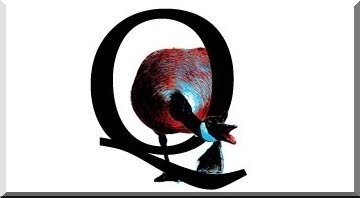By Brody Levesque | ATLANTA, GEORGIA -- In a report issued today by the Centers for Disease Control and Prevention, new multi-year data disclosed that the annual rate of new HIV infections in the United States has remained relatively stable. According the CDC's statistics, the annual number of new HIV infections in the United States was at approximately 50,000 new infections each year between 2006 and 2009.
The CDC’s first multi-year estimates from its national HIV incidence surveillance find that overall, the annual number of new HIV infections in the United States was relatively stable at approximately 50,000 new infections each year between 2006 and 2009. However, HIV infections increased among young men who have sex with men (MSM) between 2006 and 2009, driven by alarming increases among young, black MSM – the only subpopulation to experience a sustained increase during the time period.
Thomas R. Frieden, the Director of the Centers for Disease Control and Prevention in Atlanta stated:
 |
| Thomas R. Frieden |
“More than 30 years into the HIV epidemic, about 50,000 people in this country still become infected each year. Not only do men who have sex with men continue to account for most new infections, young gay and bisexual men are the only group in which infections are increasing, and this increase is particularly concerning among young African American MSM ,” said CDC Director Thomas Frieden, M.D. “HIV infections can be prevented. By getting tested, reducing risky behaviors, and getting treatment, people can protect themselves and their loved ones.”
The director for the CDC’s National Center for HIV/AIDS, Viral Hepatitis, STD and TB Prevention, Dr. Kevin Fenton, quoted in today's press release, said:
 |
| Dr. Kevin Fenton |
“While we’re encouraged that prevention efforts have helped avoid overall increases in HIV infections in the United States, and have significantly reduced new infections from the peak in the mid-1980s, we have plateaued at an unacceptably high level.
Without intensified HIV prevention efforts, we are likely to face an era of rising infection rates and higher health care costs for a preventable condition that already affects more than one million people in this country. HIV remains one of the most glaring health disparities in this country,” said Fenton.
“While we all have individual responsibility to protect ourselves from HIV infection, the research clearly shows that individual risk behavior alone doesn’t account for the significant racial disparities in HIV. It is essential to understand the underlying factors that contribute to these disparities, such as poverty, discrimination and lack of access to health care.”
Dr. Fenton also noted that the greater overall prevalence of HIV in minority communities means individuals within those communities face greater risk of acquiring HIV with every sexual encounter.
There were 48,600 new HIV infections in the United States in 2006, 56,000 in 2007, 47,800 in 2008 and 48,100 in 2009. The multi-year incidence estimates allow for a reliable examination of trends over time. They reveal no statistically significant change in HIV incidence overall from 2006 to 2009, with an average of 50,000 for the four-year period. In 2009, the largest number of new infections was among white MSM (11,400), followed closely by black MSM (10,800). Hispanic MSM (6,000) and black women (5,400) were also heavily affected.In addition to providing the first estimates for 2007, 2008, and 2009, CDC has also updated its earlier estimate of HIV incidence for 2006 (previously 56,300), which reflects refined research methods and additional years of data reporting. While the estimates announced today are based on the most current data, CDC will continue to refine the estimates over time as improvements in methods or additional data are available.
Gay & bisexual men bear greatest burden; young, black gay and bisexual men experience significant increases in HIV
Men who have sex with men remain the group most heavily affected by new HIV infections. While CDC estimates that MSM represent only 2 percent of the U.S. population, they accounted for the majority (61 percent; 29,300) of all new HIV infections in 2009. Young MSM (ages 13 to 29) were most severely affected, representing more than one quarter of all new HIV infections nationally (27 percent; 12,900 in 2009).Young MSM of all races are heavily affected. By race/risk young, black MSM were the only group to experience a statistically significant increase in new infections over the four-year time period studied. CDC estimates that new HIV infections among young, black MSM increased 48 percent during that period (from 4,400 HIV infections in 2006 to 6,500 infections in 2009).Though the reasons are not yet clear, studies suggest that several factors may be driving this trend: higher proportions of young, black MSM are unaware of their infection than MSM of other racial/ethnic groups; stigma of HIV and homosexuality, which can hinder utilization of HIV prevention services; limited access to health care, HIV testing and treatment; increased likelihood of having older sexual partners (who are more likely to be HIV infected), compared to MSM of other racial/ethnic groups; higher rates of some sexually transmitted diseases among young black men, which can facilitate HIV transmission; and under-estimating personal risk for HIV.
 |
| Dr. Jonathan Mermin |
“We are deeply concerned by the alarming rise in new HIV infections in young, black gay and bisexual men and the continued impact of HIV among young gay and bisexual men of all races,” said Jonathan Mermin, M.D., director of CDC’s Division of HIV/AIDS Prevention. “We cannot allow the health of a new generation of gay men to be lost to a preventable disease. It’s time to renew the focus on HIV among gay men and confront the homophobia and stigma that all too often accompany this disease.”
Communities of color, particularly African Americans, disproportionately affected
The HIV/AIDS epidemic continues to exact a heavy toll on communities of color. While blacks represent 14 percent of the total U.S. population, the new estimates find that they accounted for 44 percent of new HIV infections in 2009. The HIV infection rate among blacks in 2009 was almost eight times as high as that of whites. The HIV infection rate among black men was the highest of any group by race and sex – more than six times that of white men – and the rate among black women was 15 times that of white women. There was no statistically significant change in HIV incidence from 2006 to 2009 overall, among black men or black women.Hispanics represent approximately 16 percent of the total U.S. population, but accounted for 20 percent of new HIV infections in 2009. The HIV infection rate among Hispanics in 2009 was nearly three times as high as that of whites. The HIV infection rate among Hispanic men in 2009 was two and a half times that of white men, and the rate among Hispanic women was more than four times that of white women. There was no statistically significant change in HIV incidence from 2006 to 2009 among Hispanic men or Hispanic women.






















0 comments:
Post a Comment